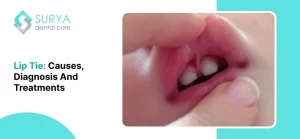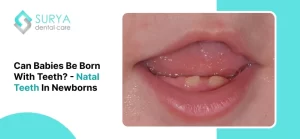Imagine gearing up for a thrilling evening at the local casino, feeling the rush of the lights and the anticipation of a winning hand. Confidence plays a huge role when you flash a winning smile, and nothing complements excitement like perfectly white teeth. For many social butterflies and nightlife aficionados, presenting a bright smile is just as important as choosing the right outfit before heading out. With a bright, radiant smile powered by pearly white teeth, you can walk onto the casino floor with unshakable confidence, which is why enthusiasts often turn to convenient tools like the barz app for entertainment after a successful whitening session. Whether you have an upcoming photo opportunity or simply want to impress fellow players, investing in proper teeth whitening can significantly impact your overall presence. At Surya Dental Care, we understand the desire to look and feel your best in any social setting, including nights out at glamorous venues. Our team has compiled insights on safe whitening methods, tailored to each patient’s individual needs. From social gatherings to special occasions, the power of a brighter smile cannot be overstated. Follow this guide to uncover the best practices and professional insights that will help you achieve and sustain an enviable white smile for every memorable night out.
Understanding the Science Behind Teeth Discoloration
As a leading cosmetic dentistry clinic in Trichy since 1999, Surya Dental Care specializes in tooth whitening treatments backed by decades of expertise and advanced technology. Teeth discoloration is a common concern that arises due to various lifestyle and biological factors. External factors such as coffee, tea, red wine, and smoking can leave stubborn surface stains on enamel over time. Meanwhile, intrinsic discoloration stems from the inner structure of the tooth and may be related to aging, trauma, or certain medications. At the microscopic level, enamel porosity increases with age and exposure to acidic substances, making teeth more susceptible to staining agents. Genetics also plays a role in determining your natural tooth color and how it responds to whitening treatments. Understanding these different sources of discoloration helps you set realistic expectations before starting any whitening program. It also allows dental professionals to tailor treatments that address your specific type of staining effectively. Dietary choices rich in pigments often have cumulative effects, so mindful eating habits contribute greatly to stain prevention. Early intervention and proper home care can delay or reduce the need for frequent whitening, saving time and cost in the long run.
Types of Whitening Treatments Available
A wide range of whitening treatments is available today, each designed to suit different preferences and budgets. In-office professional whitening performed by dentists offers the fastest results and uses high-concentration bleaching agents under clinical supervision. Customized whitening trays provided for at-home use deliver professional-grade gels that you wear for a specified duration each day. Over-the-counter whitening strips and gels are convenient but may take longer to achieve noticeable improvements. Whitening toothpaste and mouthwashes serve as maintenance tools by removing surface stains gradually with regular use. More advanced technologies such as laser-assisted whitening utilize specialized lights to accelerate the bleaching process and boost effectiveness. Each method varies in terms of cost, application time, and sensitivity risk, so selecting the right option depends on your lifestyle and priorities. Consulting with your dental professional ensures you select the ideal method based on your specific needs and lifestyle. By assessing factors such as duration, cost, and potential sensitivity, you can make an informed decision that best suits your personal schedule and comfort level.
Preparing for Your Whitening Session
Before beginning any whitening treatment, a thorough dental consultation is essential to assess oral health and eligibility. Your dentist will examine the condition of your teeth, gums, and existing restorations to rule out any contraindications. A professional cleaning session may be recommended first to remove plaque, tartar, and stubborn deposits. This preliminary step ensures the whitening agent can penetrate enamel uniformly for optimal results. Shade measurement tools or digital photography may be used to document baseline color and track progress accurately. During this appointment, discuss any history of tooth sensitivity or gum irritation with your provider. It is also wise to discuss any cosmetic goals you have so that your dentist can align treatment settings accordingly. Clear pre-treatment guidelines, such as avoiding staining foods or beverages for a few days prior, will maximize the effectiveness of your whitening session. Proper preparation sets a solid foundation for a smooth whitening experience with predictable, long-lasting outcomes.
At-Home Whitening: Tips for Safe and Effective Use
At-home whitening kits offer flexibility and convenience for patients who prefer to treat their teeth outside the dental office. When using these products, always follow the manufacturer’s instructions carefully to avoid over-bleaching or gum irritation. Ensure that whitening trays fit properly and that excess gel does not come into contact with soft tissues. Applying gel for longer periods or at higher concentrations than recommended can increase the risk of sensitivity without improving results. Limit application time to the prescribed duration, typically ranging from 30 minutes to overnight, depending on the kit. Practice good oral hygiene by brushing gently with a soft-bristled toothbrush and flossing before each whitening session. Rinse thoroughly after treatment to remove residual gel and reduce the chance of chemical burns. Store whitening products in a cool, dry place to maintain the stability of active ingredients. Regularly inspect your trays or strips for wear and replace them as needed to ensure consistent performance. Seek clarification from your dentist ahead of time if you have any questions about the application process or potential interactions with ongoing treatments.
- Brush and floss 30 minutes before applying whitening gel
- Use desensitizing toothpaste if sensitivity occurs
- Avoid coffee, tea, and red wine for at least 48 hours after treatment
- Maintain hydration by drinking water after meals
- Schedule follow-up appointments every six months
Professional Whitening Procedures: What to Expect
Professional whitening procedures are administered by trained dental professionals and typically yield faster, more dramatic results compared to over-the-counter products. During an in-office appointment, protective barriers are placed to shield gums and lips before applying a high-strength bleaching gel to your teeth. Depending on the chosen system, the gel may be activated by specialized light or laser to accelerate the bleaching process. Treatment sessions usually last between 45 and 90 minutes, depending on the depth of discoloration and the desired shade improvement. Patients often notice up to six to eight shades of whitening in just one appointment, while home kits require multiple sessions for similar outcomes. Some systems incorporate desensitizing agents into the gel formula to reduce post-treatment discomfort. After the procedure, your dentist will provide you with post-care instructions and may recommend follow-up gel applications to maintain brightness. Before your appointment, ensure that you arrive with clean, dry teeth for optimal gel adhesion and activation. Your dental team will continuously monitor your comfort level and progress throughout the session to ensure safety at every step.
In-Office Whitening vs Laser-Assisted Whitening
In-office whitening without light activation uses only bleaching agents to lift stains, offering a more controlled and gentle approach. Laser-assisted systems direct focused light energy to amplify the bleaching reaction and can achieve whiter results faster. The choice between these options often depends on your sensitivity levels, budget, and time availability. Laser whitening typically costs more but may require fewer visits, making it suitable for busy individuals seeking immediate outcomes. Traditional in-office bleaching remains popular for its cost-effectiveness and predictable safety profile. Both methods should be performed under professional supervision to monitor tissue health and adjust treatment as needed. Discuss your preferences and concerns with your dentist to determine which approach aligns with your priorities. Regardless of the method, consistent maintenance and proper aftercare are essential to preserve your newly enhanced smile.
Managing Sensitivity and Potential Side Effects
Tooth sensitivity is a common side effect associated with both at-home and professional whitening treatments, affecting up to 50 percent of patients. Sensitivity usually manifests as a brief, mild discomfort or tingling sensation when consuming hot or cold foods and drinks. These side effects are generally temporary and subside within 24 to 48 hours after treatment. Desensitizing toothpaste containing potassium nitrate or fluoride can help reduce discomfort when used regularly before and after whitening. Your dentist may also recommend applying fluoride varnish or a customized fluoride gel immediately following professional procedures. Maintaining good hydration and avoiding extreme temperature foods can support the recovery of enamel and minimize irritation. In some rare cases, superficial bleaching may cause temporary gum irritation, which usually resolves within a few days. It is important to report any prolonged pain or gum inflammation to your dental provider promptly. Ongoing communication with your dental care team allows for prompt adjustments if unexpected sensitivities arise.
Pro Tip: To manage sensitivity effectively, use a soft-bristled toothbrush and apply a fluoride-based desensitizing gel twice daily for at least one week following whitening sessions.
Maintaining Your Whitening Results for the Long Term
Maintaining your whitening results requires consistent oral hygiene practices and lifestyle adjustments. To prevent new stains from forming, avoid or limit consumption of highly pigmented foods and drinks such as berries, curries, and soda. When indulging occasionally, rinse your mouth with water immediately afterward to wash away residual pigments. Incorporate regular professional cleanings and check-ups every six months to remove surface buildup before it becomes stubborn. Touch-up treatments with at-home gels can be done monthly or as recommended by your dentist to sustain brightness. Use whitening toothpaste once or twice a week to help manage minor stains between major treatments. Mouthguards or customized trays can protect against discoloration and maintain gel contact when using touch-up kits. Professional guidance can further optimize your maintenance routine and address any emerging concerns before they escalate. Always follow up with fluoride treatments or desensitizing rinse to support enamel health and extend the benefits of whitening. With disciplined care and mindful habits, your luminous white smile will remain a hallmark of your confident presence.






Leave a Comment